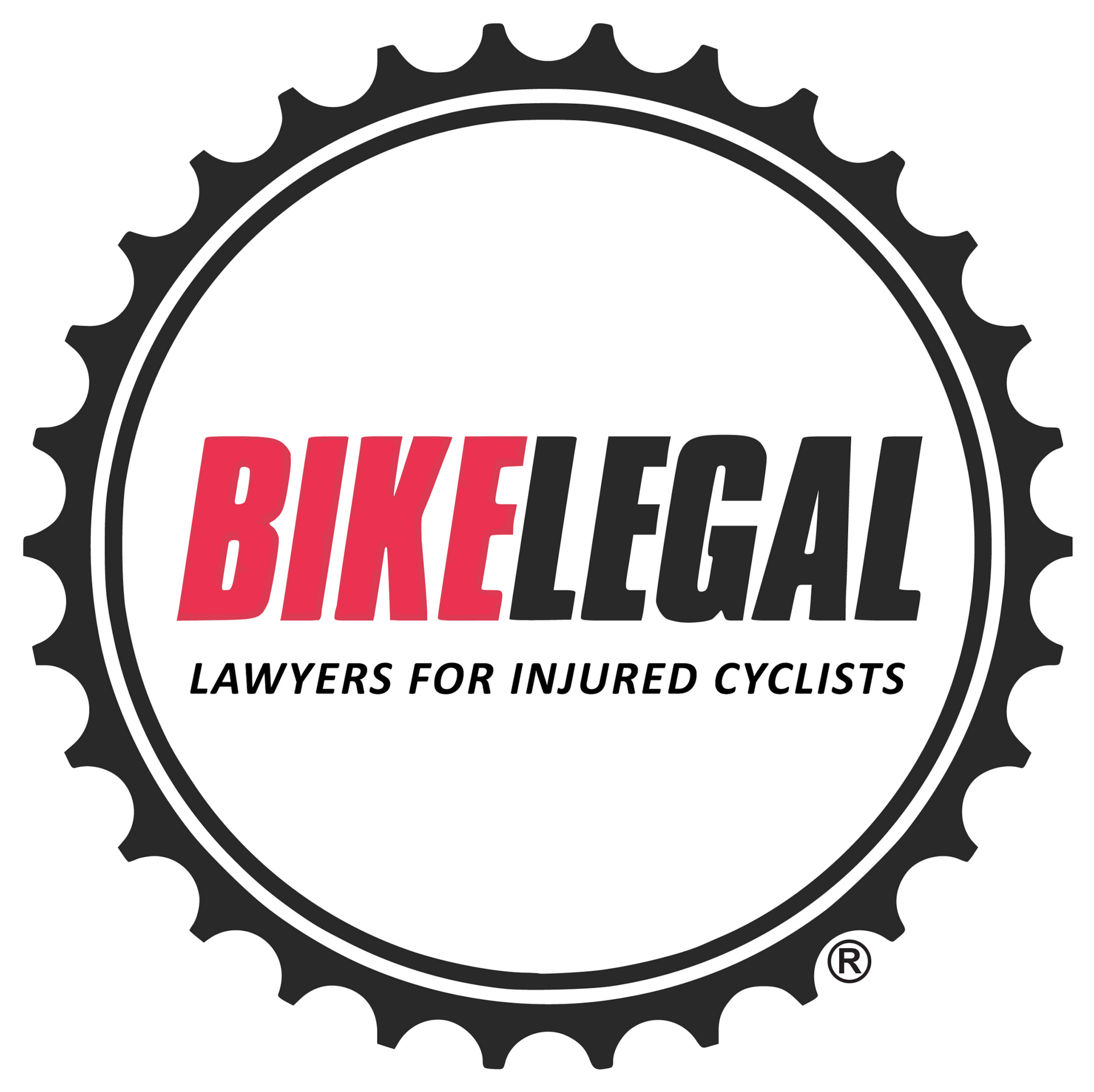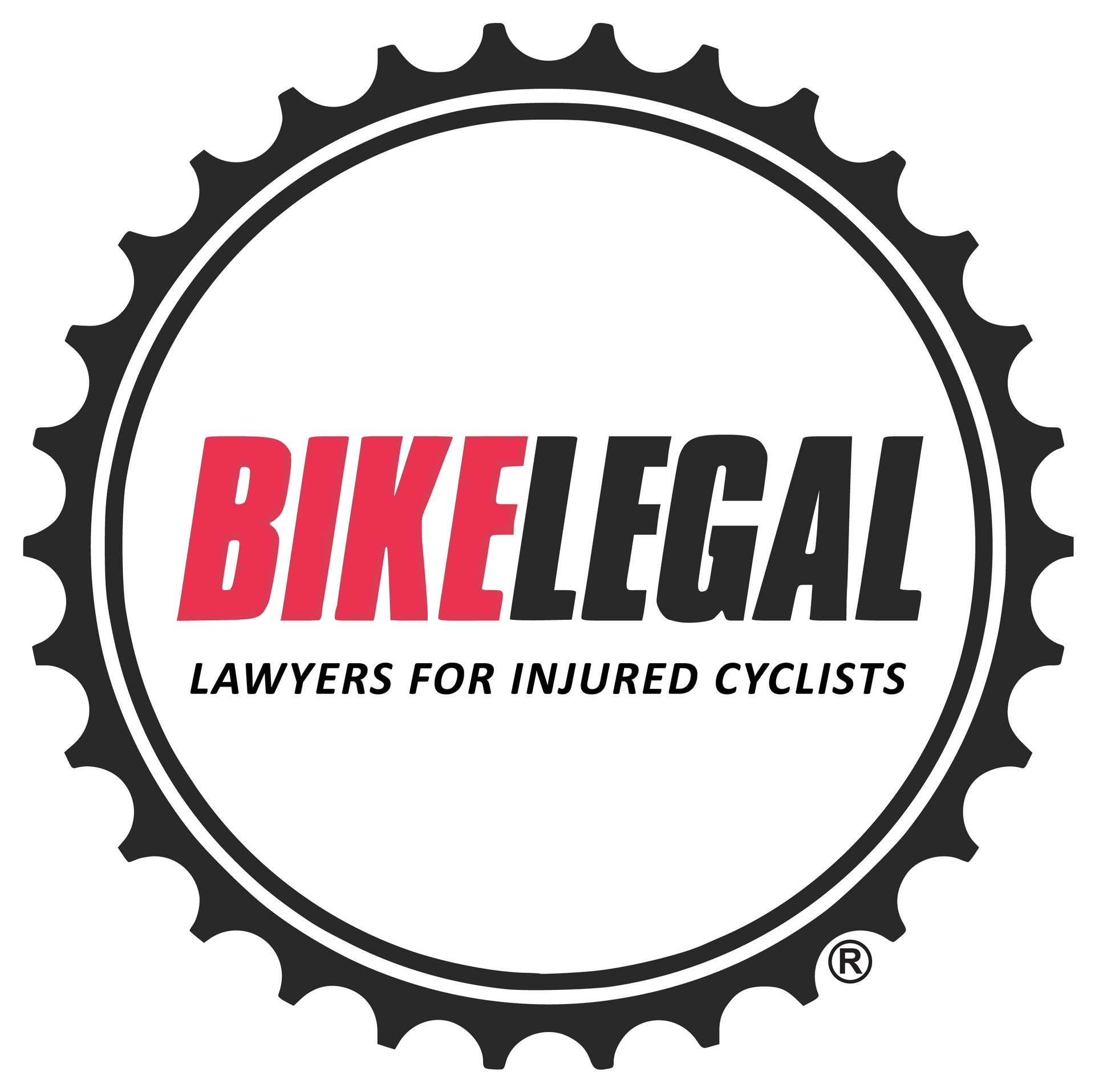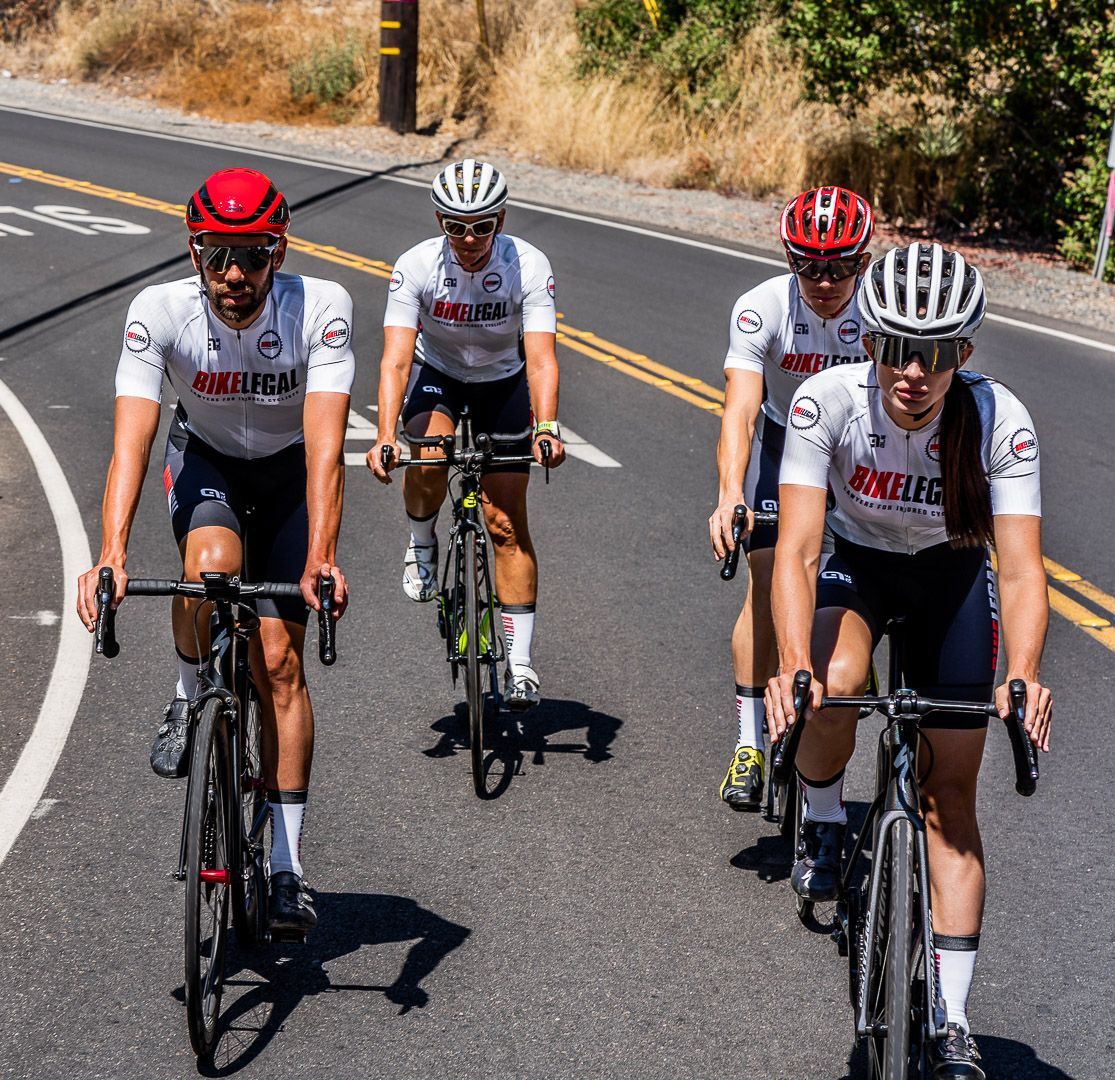The 16 Best Bicycle Safety Accessories and Technology for Safer Rides
Follow us on
social media!
Staying safe on the road is a top priority for every cyclist, and with advancements in cycling safety technology, it's easier than ever to protect yourself. From smart helmets and integrated lighting systems to radar detection and real-time tracking apps, today's innovations are helping cyclists avoid accidents and ride with more confidence.
This article highlights the best safety gear and cutting-edge technologies available to enhance your cycling experience and keep you safer on every ride.
Here's what we'll cover:
- Basic Safety Tools Every Rider Should Always Use
- Advanced Recommended Safety Tech for Frequent Riders
- Additional Advanced Tech
- Innovative and Unusual Safety Technologies
- How Advanced Safety Tech is Reducing Bicycle Accidents
TL;DR - Best Bicycle Accessories to Enhance Safety on the Road
This blog covers essential and advanced safety tools to help cyclists stay safe and enjoy smooth rides. Key points include:
- Helmets: Reduce the risk of head injury with features like MIPS technology and integrated lighting.
- Lights: Front and rear lights improve visibility, reducing accidents, especially in low-light conditions.
- Reflective Clothing: Enhances visibility at night, making cyclists more noticeable to drivers.
- Audible Devices: Bells and horns alert pedestrians and other road users to your presence, improving safety in crowded areas.
- Cycling Computers: Track ride data and connect to apps like Strava for performance analysis and route planning.
- Cameras: Capture critical footage in case of accidents, helping identify hit-and-run drivers and provide crucial evidence.
- Radar Systems: Alert cyclists to approaching vehicles, increasing situational awareness of traffic.
- Smart Helmets and Crash Sensors: Provide built-in lights, turn signals, and emergency alerts to enhance safety.
- Strava Beacon: Shares real-time location with contacts, ensuring someone knows where you are during your ride.
- Lighted Wheels and Clothing: Improve visibility from all angles with integrated LEDs, making cyclists stand out in traffic.
- Airbags: Offer advanced protection by inflating around the head and neck during accidents, reducing the risk of serious injury.
- See.Sense ICON3 Smart Bike Lights: Provide 360° visibility with smart sensors that adapt to road conditions, ensuring optimal visibility at all times.
- Bicycle Safety Apps: Safety apps like Strava Beacon, Busby, and RoadID offer real-time location sharing, incident detection, and emergency alerts, helping cyclists stay connected and safer on the road.
Must-Have Safety Tools for Every Cyclist
1. Helmet
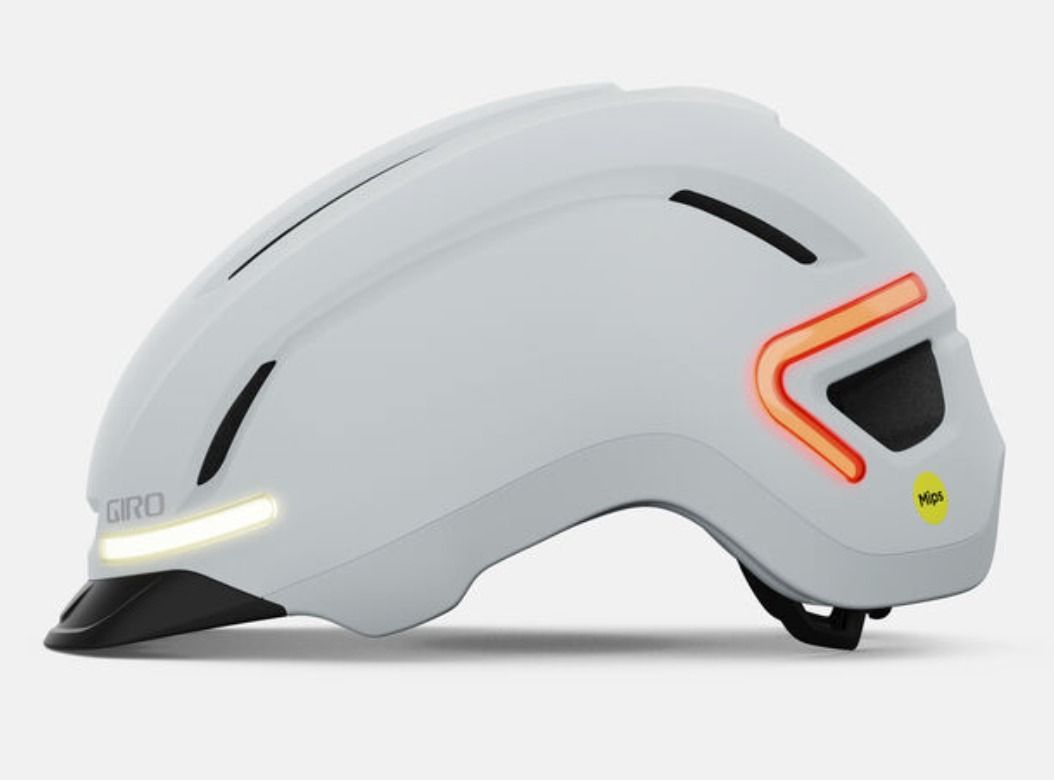
A helmet is the most critical piece of safety gear for cyclists. It's designed to protect your head in the event of an accident. Statistics show that helmets can reduce the risk of head injury by up to 60% in the US. Modern helmets are lightweight, offer improved impact resistance, and feature MIPS (Multi-directional Impact Protection System) technology, which reduces rotational forces during a crash.
Purpose:
- Provides primary protection for the head in case of an accident.
Why It's Important?
- Reduces the risk of head injury by up to 60%.
- Essential for all riders, from casual cyclists to competitive athletes.
Advancements:
- Lightweight Materials: Newer helmets use materials like polycarbonate and EPS foam, making them lighter and more comfortable without sacrificing safety.
- Improved Impact Resistance: Enhanced designs and materials provide better shock absorption.
- MIPS Technology: MIPS helmets include a low-friction layer inside the helmet that allows a sliding motion of 10-15 mm in all directions, reducing rotational motion to the brain during impact.
Tips To Use Helmets Efficiently:
- Fit Matters: Ensure your helmet fits snugly and sits level on your head, covering your forehead.
- Replace Regularly: Helmets should be replaced every 3-5 years, or immediately after a significant impact.
- Check Certifications: Look for helmets that meet safety standards such as CPSC (Consumer Product Safety Commission) certification.
Read next 👉 (2024) The Ultimate Bicycle Helmet Guide for Cyclists
2. Bicycle Lights
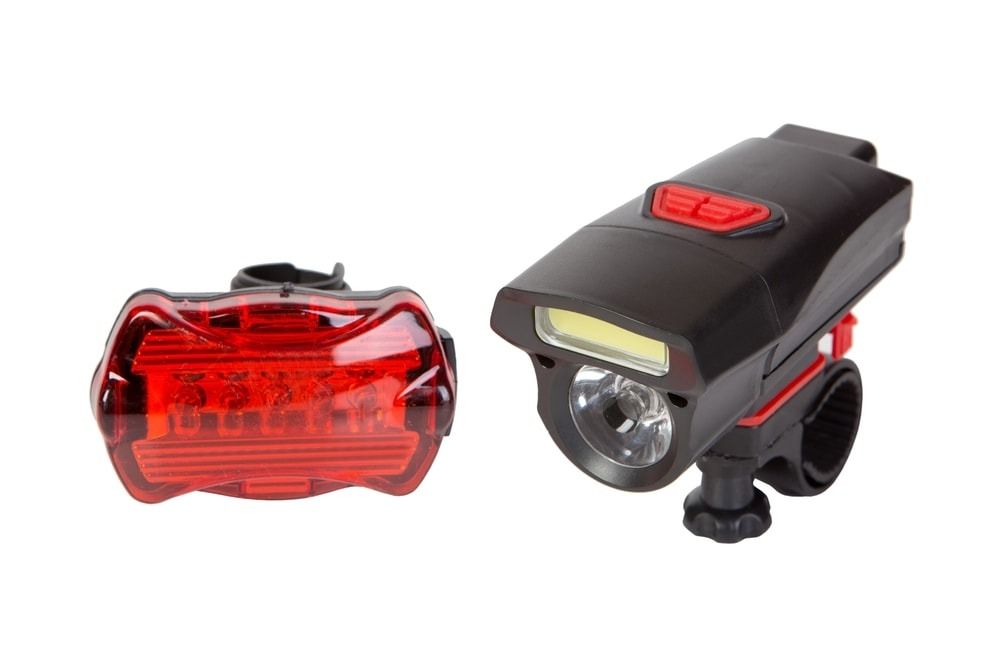
Visibility is crucial for safe cycling, both when riding in wet conditions and riding day and night. Front and rear lights ensure you are seen by motorists and other cyclists. Many cities require lights 30 minutes before sunset and 30 minutes after sunrise.
Why It's Important?
- Essential for visibility both day and night to avoid accidents and enhance safety.
Types of Lights:
- Front Lights: These lights typically have higher lumens for better visibility ahead. They come in various brightness levels, with some offering up to 1000 lumens for maximum visibility.
- Rear Lights: These often have flashing modes designed to catch drivers' attention. Rear lights usually range from 50 to 200 lumens, depending on the need for visibility in different settings.
Benefits:
- Increased Visibility: Front and rear lights significantly reduce the risk of accidents by making cyclists more visible to motorists and other road users. A study found that cyclists using lights during the day were 19% less likely to be involved in a crash.
- Daytime and Night Use: Using both front and rear lights during the day and night is beneficial. Daytime running lights improve visibility in various lighting conditions, while nighttime lights are essential for seeing and being seen in the dark.
Tools To Use:
- Lumens Guide: Use a lumens guide to choose the right brightness level for your front and rear lights based on your riding environment.
- Multi-Mode Lights: Invest in lights that offer multiple modes (steady, flashing, pulsing) to adapt to different visibility needs and preferences.
3. Reflective and Bright Cycling Clothing
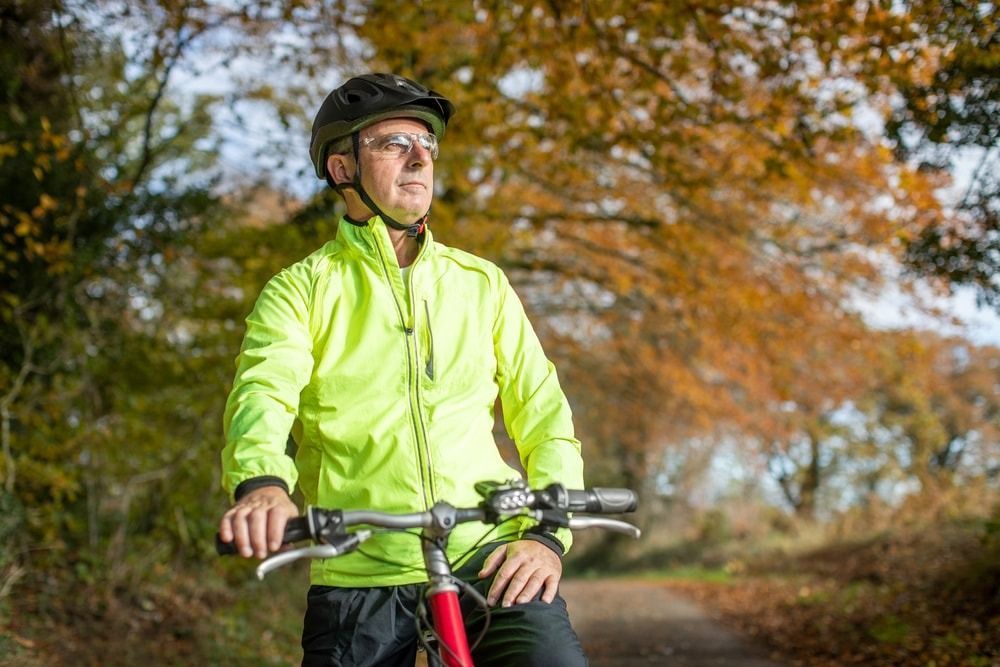
Reflective and bright clothing enhances your visibility to motorists. Bright-colored cycling jerseys, jackets, and vests, with reflective materials are essential for riding during the day and especially at night in cold weather. They also make for a perfect gift for any cycling enthusiast!
Purpose:
- Enhances visibility to motorists, especially in low-light conditions, making cyclists more noticeable and reducing the risk of accidents.
Examples of Reflective Clothing:

- Reflective Jackets and Vests: These garments often have reflective strips on the front, back, and sides, providing 360° visibility. Some models include LED lights for added visibility.
- Cycling Jerseys: Choose brightly colored cycling jerseys like this one from Planet Ultra that can be seen from a distance. Look for brands that have reflective tabs that become very visibly in headlights at night.
- Gloves and Helmets with Reflective Strips: These accessories ensure that even hand signals and head movements are visible to drivers.
Benefits:
- Increased Visibility: Reflective clothing significantly enhances your visibility in traffic, reducing the risk of accidents. The National Highway Traffic Safety Administration (NHTSA) emphasizes that retroreflective materials can dramatically increase the detection distance for cyclists. When properly utilized, these materials allow drivers to see cyclists much earlier, potentially preventing accidents.
- Research has shown that cyclists wearing reflective clothing, especially those with reflective strips on their extremities are recognized more effectively by drivers. A study found that cyclists with a combination of reflective gear were identified correctly by 90% of drivers, compared to much lower recognition rates for those in darker clothing.
- Safety in Low-Light Conditions: Reflective gear is crucial for early morning or evening rides when light levels are low. It ensures that cyclists remain visible to drivers, even in poor lighting.
Tips To Use It Efficiently:
- Layering: Combine reflective clothing with bright-colored garments for maximum visibility. Bright colors are more noticeable during the day, while reflective materials enhance visibility at night.
- Full Coverage: Use a combination of reflective jackets, vests, gloves, and helmets to ensure visibility from all angles.
- Regular Maintenance: Wash reflective clothing according to manufacturer instructions to maintain its reflective properties. Replace worn-out items to ensure they remain effective.
Another Example of Reflective Clothing: ICNY Reflective Socks
A practical and stylish addition to your apparel, ICNY Reflective Socks feature reflective dots that catch light from vehicle headlights and streetlights, enhancing cyclist visibility. The pedaling motion becomes highly noticeable, improving safety, especially in low-light conditions.
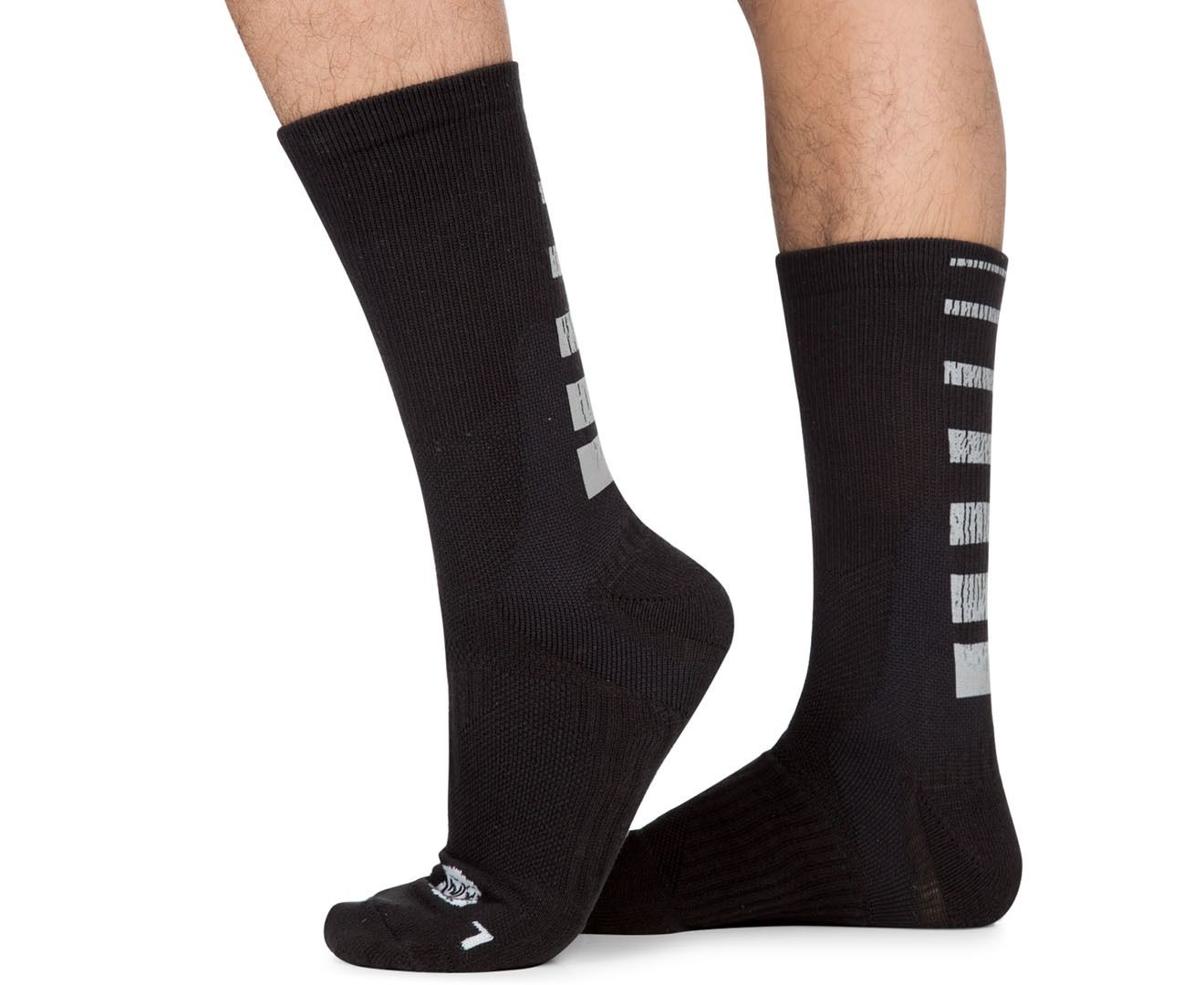
- Design: These socks feature strategically placed reflective dots or stripes to catch and reflect light, making them visible from a distance.
- Benefits: They provide an additional layer of visibility, drawing attention to cyclists’ movements, particularly at night.
- Comfort and Style: Made from breathable materials, these socks are not only comfortable for long rides but also add a fashionable element to a cyclist’s gear.
- Versatility: Suitable for various cycling conditions, including commuting, road cycling, and mountain biking.
4. Audible Devices: Bicycle Bells and Horns
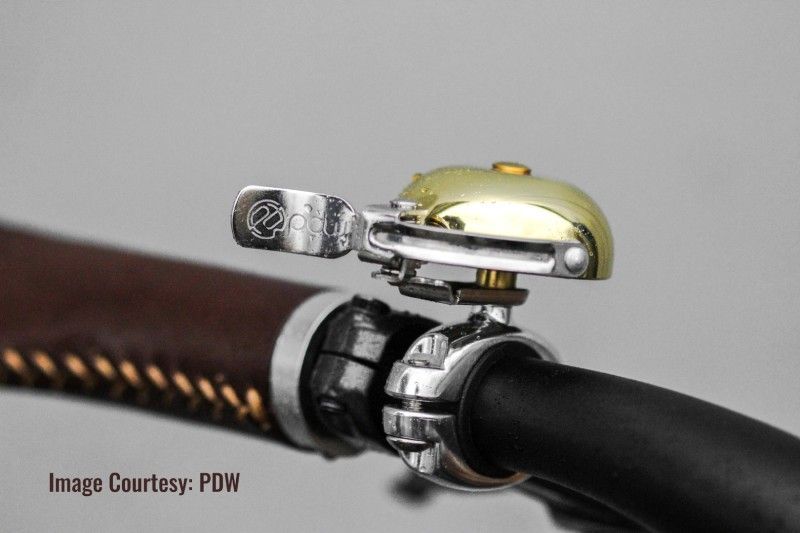
Bells and horns are simple yet effective and essential road bike accessories urban cycling. They alert pedestrians and other cyclists to your bike and presence, helping to prevent collisions.
Purpose:
- Audible devices enhance safety by alerting pedestrians, other cyclists, and vehicles to your presence. This is particularly crucial in urban environments where space is shared. Keep yourself and your bike secure with the right audible device!
Types of Audible Devices:
- Bells: Ideal for signaling in low-traffic areas, bells produce a pleasant sound that is easily recognized by pedestrians and other cyclists.
- Horns: Louder options for busy streets, horns provide a more forceful warning to vehicles and pedestrians in high-traffic areas.
Legal Requirements:
- In some cities, such as NYC and Portland, the use of audible devices like bells or horns is mandated by law. Failing to have an audible device can result in fines and an increased risk of accidents.
Benefits:
- Increased Awareness: Audible devices increase awareness of your presence, helping to prevent accidents. They are essential in crowded areas and during group rides.
- Compliance with Laws: Using bells and horns ensures compliance with local regulations, avoiding fines and enhancing safety.
Tools To Use:
- Dual-Function Devices: Consider using dual-function devices that combine both bike bell and horn features, providing versatility for different riding conditions.
- Electronic Horns: Electronic horns offer multiple sound options and are generally louder than mechanical ones, making them ideal for urban environments.
Next-Level Safety Tech for Avid Cyclists
5. Cycling Computers
Cycling computers small enough to fit in your saddle bag that records data such as speed, distance, and route. Advanced cycling computer models from Garmin and Wahoo track extensive performance metrics and integrate them with apps like Strava. They also link their cycling computer computers to radar and cameras for enhanced safety.
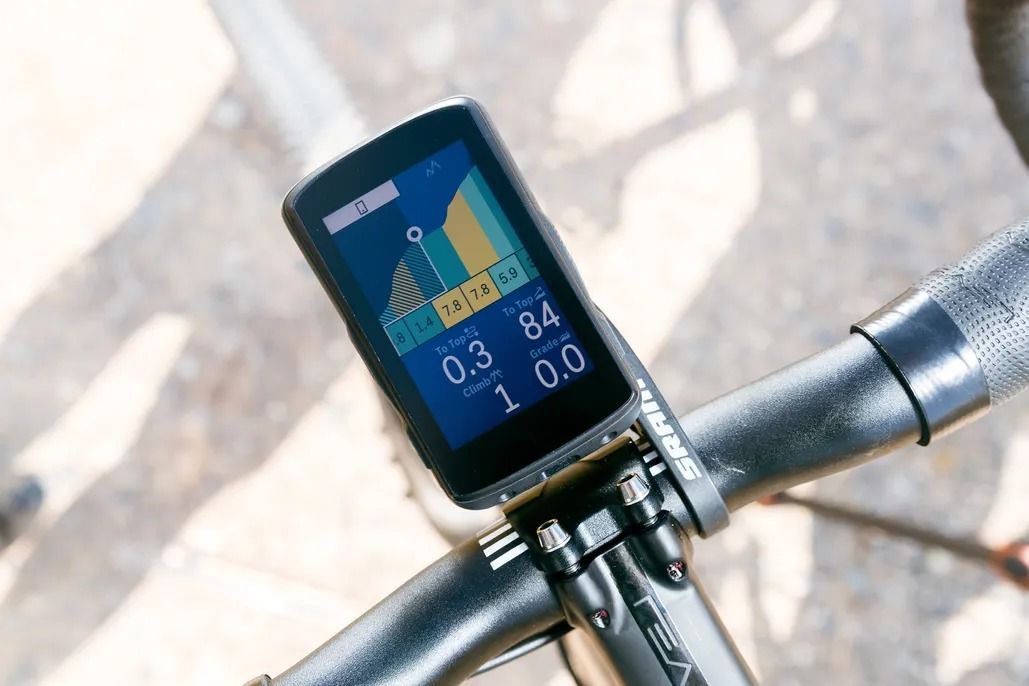
Function:
- Basic Models: Record data such as speed, distance, and route, providing essential information for casual riders.
- Advanced Models: Offer GPS, fitness tracking, and connectivity to other devices like heart rate monitors and power meters. These models can link to Strava and training programs to track fitness progress and set goals. They also connect to advanced technology like radar and cameras to provide comprehensive ride data.
Safety & Legal Use:
- Data files from cycling computers is very beneficial for analyzing bicycle accident data. This includes tracking speed, determining if there was a sudden slowdown, and pinpointing the exact location of the crash. Such data can be used in legal claims, helping to establish liability and support compensation cases.
- For Example, An avid cyclist using a Garmin Edge cycling computer found that detailed ride data, including heart rate and power, was instrumental in improving her training regimen. Additionally, the integration with Garmin Varia radar alerts her of approaching traffic from behind. This information allows the cyclist to make decisions about safer positioning in the lane.
Benefits:
- Performance Tracking: Helps riders monitor their performance and progress over time.
- Navigation: GPS features assist with route planning and real-time navigation, ensuring you stay on course.
- Safety: Integration with radar and cameras enhances safety by alerting riders to approaching vehicles and recording ride footage for evidence.
6. Front and Rear Cameras
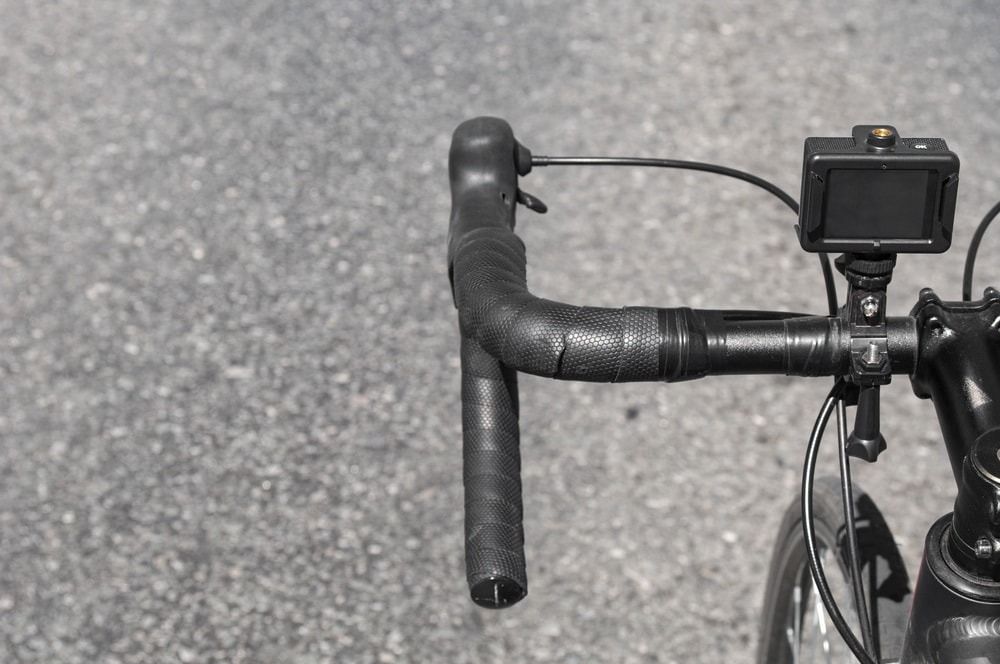
Front and the front light rear cameras capture footage of your rides, providing evidence in case of accidents. This footage can help identify hit-and-run drivers and establish liability in legal claims, making it an invaluable tool for cyclists to protect themselves.
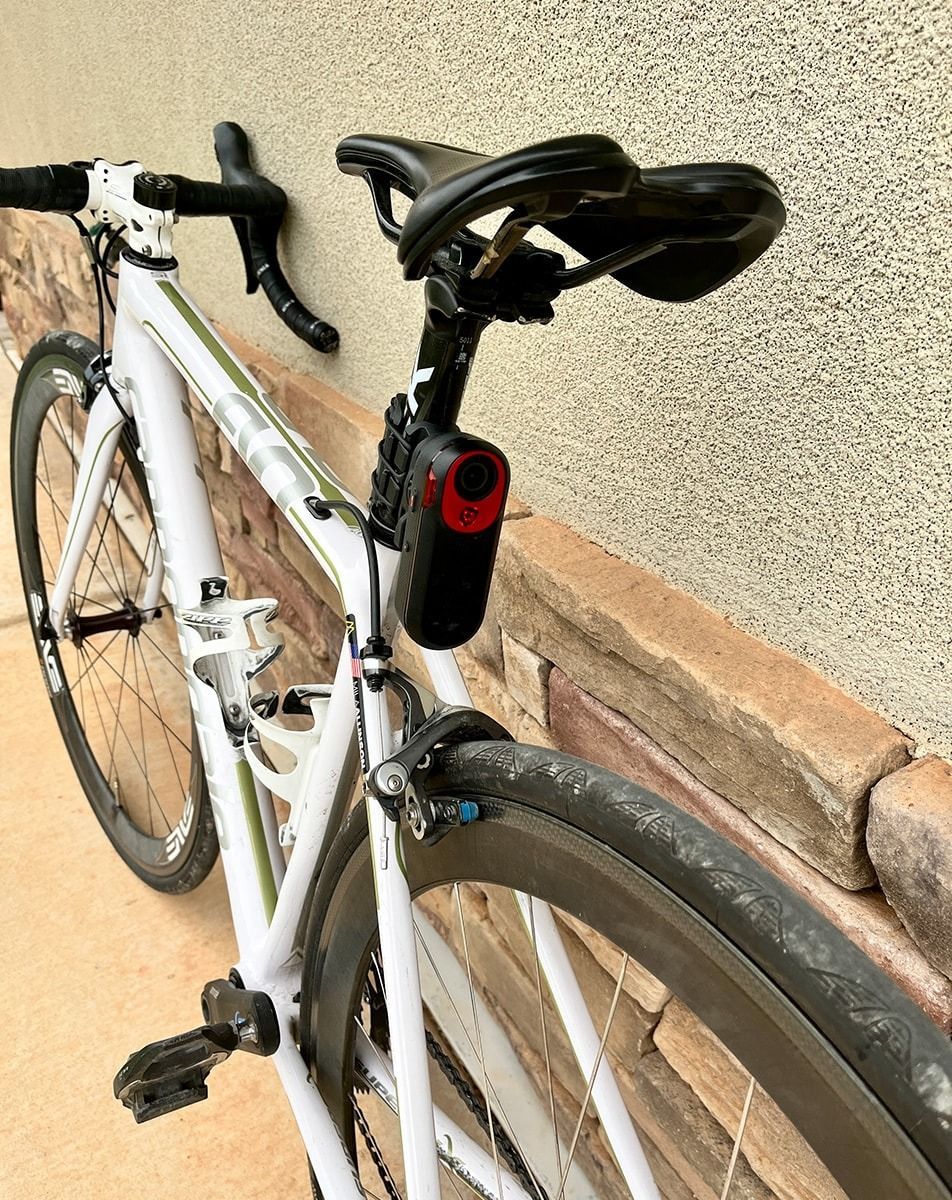
Purpose:
- Recording Your Favorite Route: Many cycling cameras have the ability to integrate your performance data such as speed, power output, gradient and more. These videos can be shared with other cyclists who may be curious about the route or race you did.
- Evidence Collection: Capture footage of rides to provide evidence in case of accidents. This footage can be helpful for identifying hit-and-run drivers and proving liability in legal claims.
- Safety Improvement: Reviewing footage can help cyclists improve their riding techniques by identifying risky behaviors or dangerous routes.
Benefits:
- Legal Protection: In the event of an accident, camera footage can provide evidence of the incident. This can be beneficial in legal cases to establish liability and secure compensation.
- Driver Accountability: Cameras can help identify reckless or hit-and-run drivers.
Tips To Use It Efficiently:
- High-Resolution and Wide-Angle Lenses: Install cameras with high-resolution (at least 1080p) and wide-angle lenses to ensure clear and comprehensive coverage of your surroundings.
- Battery Life: Opt for cameras with long battery life or carry spare batteries to ensure continuous recording during long rides.
- Mounting Position: Securely mount cameras on the front and rear of your bike to capture the full range of activity around you.
7. Radar Early Warning Systems
Radar early warning systems and road bike accessories like the Garmin Varia RTL515 are designed to alert cyclists to approaching vehicles, enhancing situational awareness and safety on road bikes.
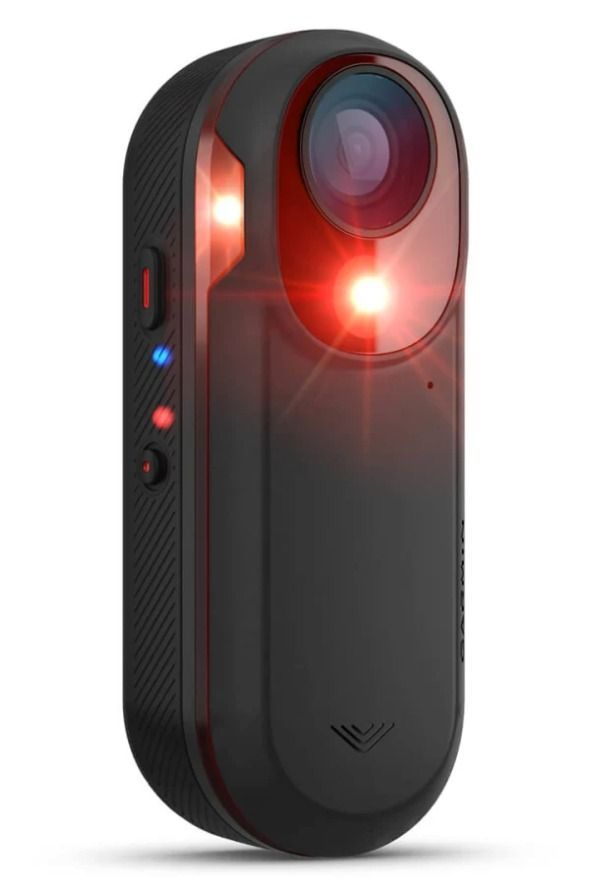
Example:
- Garmin Varia: This device uses radar technology to detect vehicles approaching from behind and provides visual and audible alerts to the cyclist.
Pros:
- Increased Situational Awareness: Alerts you to vehicles approaching from behind, giving you time to react and take necessary precautions.
- Enhanced Safety: Particularly effective in rural areas with less dense traffic, vehicle speeds may be higher, and cyclist visibility lower.
- Compatibility: Many radar systems integrate with cycling computers and smartphones, providing seamless alerts and data synchronization.
Cons:
- Expense: These systems can be expensive, which might be a barrier for some cyclists.
- Urban Settings: They may trigger false alarms in dense urban environments with lots of moving objects, potentially causing unnecessary alerts.
- Battery Life: Frequent use can drain the battery quickly, requiring regular recharging or spare batteries for long rides.
Benefits:
- Safety Enhancement: Studies have shown that cyclists using radar systems feel safer and more confident on the road. The early warnings allow them to take evasive actions when necessary.
- Reduced Accidents: By providing advance notice of approaching vehicles, radar systems can help reduce the likelihood of rear-end collisions, which are a common cause of serious injuries for cyclists.
Example: Garmin Varia Rearview Radar
The Garmin Varia Rearview Radar is a top-tier example of radar technology for cyclists. It detects vehicles up to 140 meters (153 yards) away and provides visual and audio signals through compatible Garmin devices or smartphones via the Garmin Varia app.
The Varia also includes a bright rear light that adjusts its intensity based on the proximity and speed of approaching vehicles, further increasing the cyclist’s visibility to drivers. This system integrates smoothly with Garmin Edge cycling computers and select smartphones, offering cyclists a flexible and accessible way to monitor their safety alerts during rides.
You can purchase the Garmin Varia Rearview Radar directly from Garmin’s official website: Garmin Varia Rearview Radar.
8. Smart Helmets
The most advanced smart helmets and bikes come equipped with built-in lights, turn signals, and crash detection systems. These features not only improve visibility but also provide crucial safety alerts, enhancing the overall safety of cyclists.
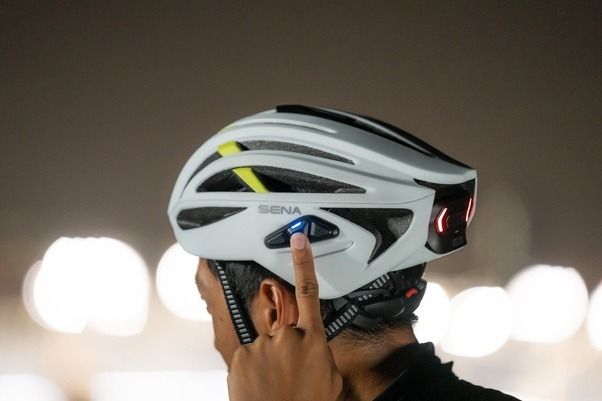
Features:
- Integrated Lights and Turn Signals: Smart helmets often include front and rear lights, making you more visible to other road users. Turn signals integrated into the helmet allow you to indicate your intentions without taking your hands off the handlebars.
- Crash Detection: These helmets can detect crashes and automatically send alerts to your emergency contacts with your location, ensuring help arrives quickly if you're unable to call for it yourself.
Benefits:
- Increased Visibility: The built-in lights enhance your visibility in low-light conditions, making it easier for motorists to see you.
- Automatic Alerts: In the event of a crash, the automatic alerts can be lifesaving, ensuring that emergency contacts are notified promptly.
- Enhanced Communication: Turn signals improve communication with other road users, reducing the risk of accidents when making turns or changing lanes.
9. Crash Sensors
Crash sensors are crucial for detecting falls and alerting your emergency contacts immediately. These sensors can be integrated into bike computers or used as standalone devices mounted on helmets cycling shoes, clipless pedals, and maybe even cycling gloves, or bikes. More than 50% of the combined total of fatal and injury crashes occur at or near intersections.
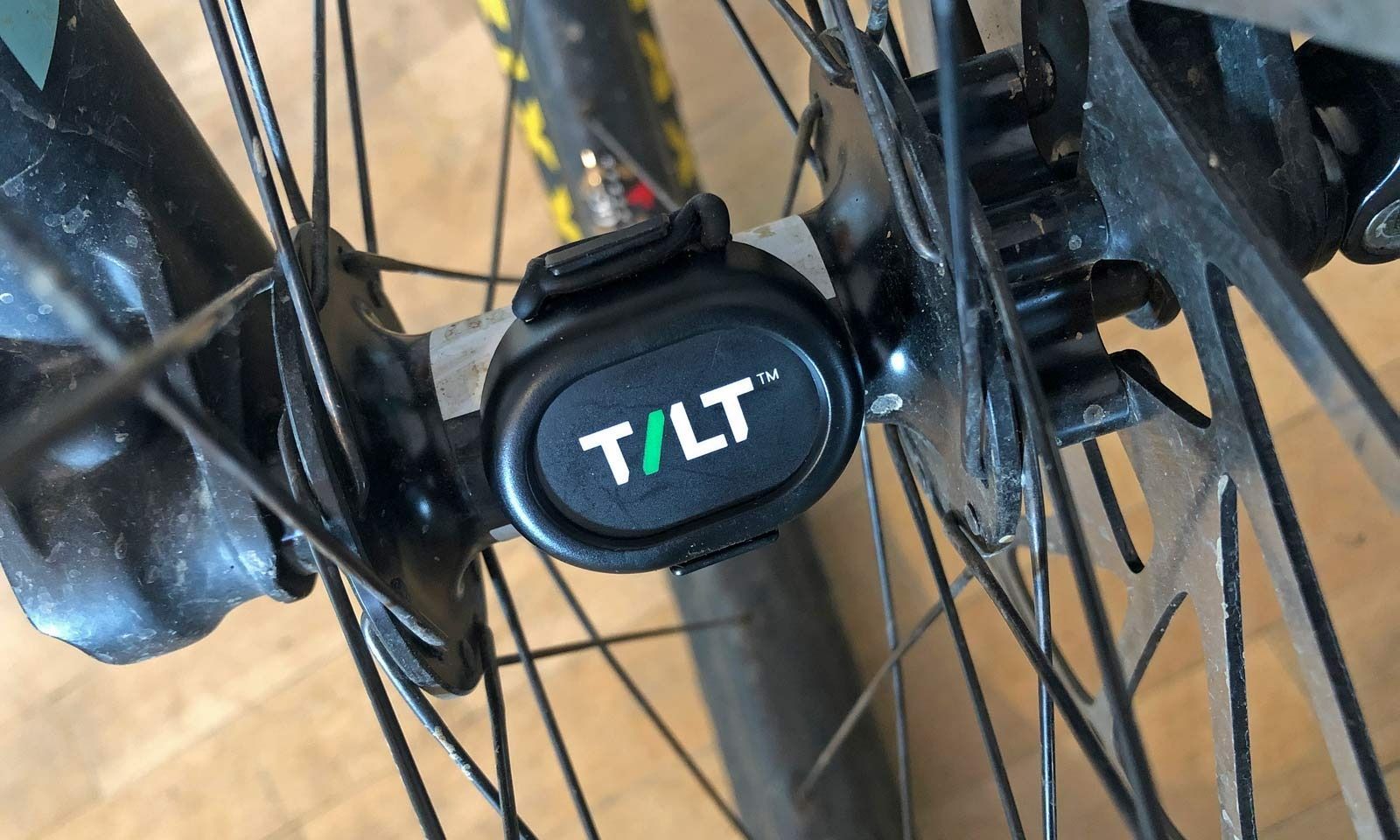
Integration:
- With Bike Computers: Crash sensors often work in tandem with bike computers to provide comprehensive data tracking. This integration allows for seamless monitoring and immediate alerts in case of an accident.
- Standalone Options: These sensors can also be standalone devices, either helmet-mounted or attached to the bike. They provide an additional layer of safety by detecting crashes and sending alerts independently.
Benefits:
- Immediate Alerts: In the event of an accident, crash sensors send immediate alerts to your emergency contacts, ensuring that help can arrive quickly.
- Enhanced Safety: Knowing that your location and accident details will be shared automatically provides peace of mind and encourages more confident riding.
- Comprehensive Data: When integrated with bike computers, crash sensors contribute to a detailed log of your ride, including speed, location, and the nature of the crash. This data can be invaluable for medical responders and in legal situations.
Tools To Use It Efficiently:
- Emergency Contact App: Use a compatible app to manage and update emergency contact information, ensuring that alerts are sent to the right people.
- GPS Integration: Select crash sensors that include GPS functionality to provide precise location data when an alert is sent.
10. Strava Beacon
Strava Beacon is a feature within the Strava app that allows cyclists to share their real-time location with trusted contacts. This can significantly enhance safety during rides, especially for those who frequently cycle alone.
Function:
- Real-Time Location Sharing: Strava Beacon enables you to share your live location with selected contacts. This feature requires a smartphone with the Strava app and an active internet connection.
Limitations:
- Dependent on Network Connectivity: The effectiveness of Strava Beacon relies heavily on having a stable internet connection. In areas with poor network coverage, the feature may not work as intended.
- Battery Drain: Continuous use of GPS and mobile data can drain your smartphone battery quickly, which can limit the duration of effective use during long rides.
Benefits:
- Enhanced Safety: Real-time location sharing ensures that someone always knows where you are during your ride. This is particularly useful in case of an accident or if you get lost.
- Quick Response: In the event of an emergency, knowing your exact location allows your contacts to send help promptly.
- Peace of Mind: Both you and your family can feel more secure knowing that your location is being monitored in real time.
Tools To Use It Efficiently:
- Mobile Data Plan: Ensure you have a reliable data plan to maintain continuous internet connectivity throughout your ride.
- Strava Premium: Strava Beacon is available to Strava Premium subscribers, so consider upgrading your subscription for this and other advanced features.
Extra Tech Accessories to Up Your Safety Game
11. Lighted Wheels
Lighted wheels and tires aren't just for kids! This added illumination enhances visibility from all directions, making night rides safer and more fun.
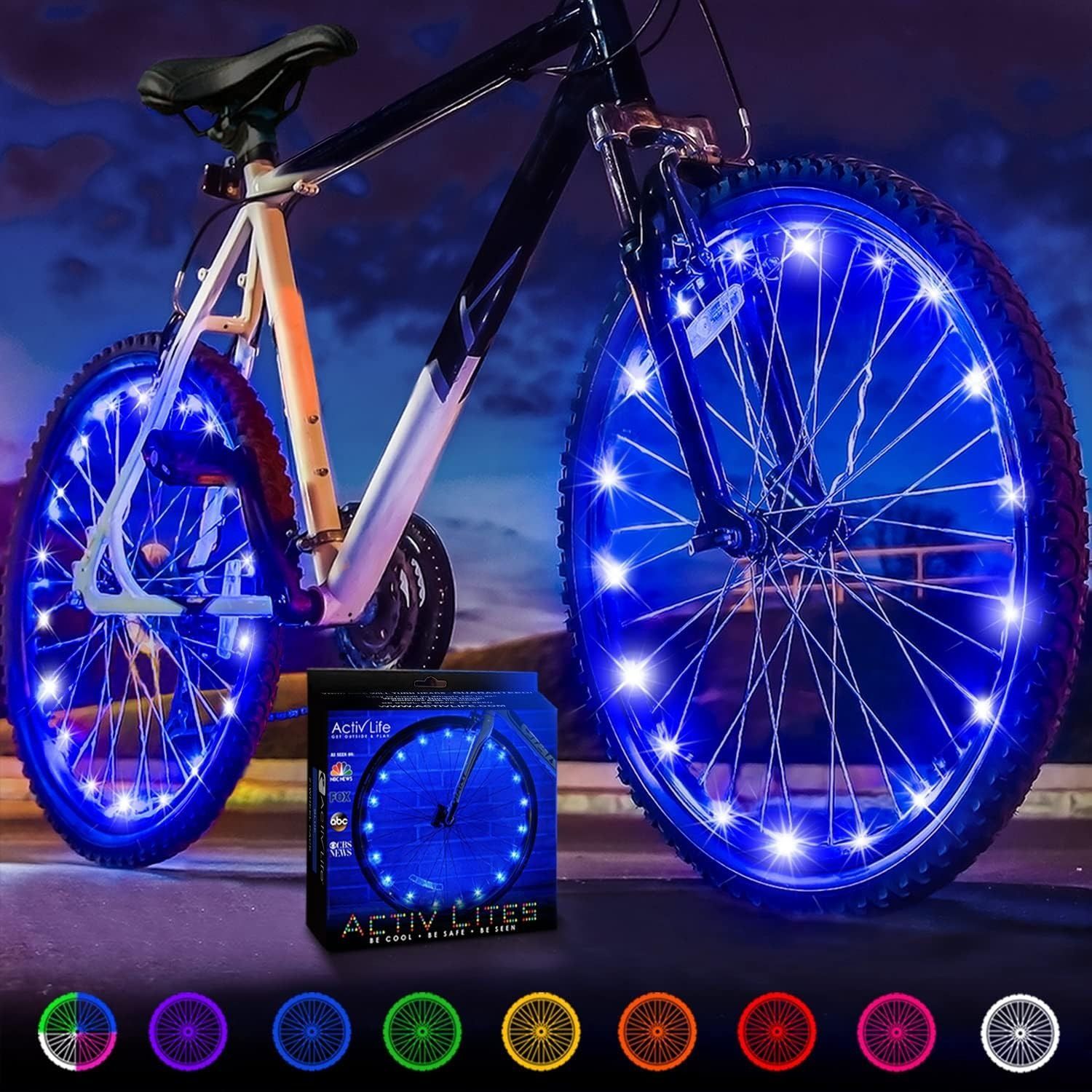
Example:
- Activ Life LED Bike Wheel Lights: These highly popular lights come with 21 bright LEDs for each wheel, providing 360° illumination to improve your visibility on the road. These lights are easy to install and come with a range of vibrant colors, ensuring you stand out, day or night.
Function:
- 360° Visibility: The lights cover the entire wheel, ensuring you're visible from all angles, improving your safety in low-light conditions.
- Multicolor LED Lights: With options to change colors and light patterns, Activ Life lights add style and extra visibility to your bike.
Benefits:
- Improved Visibility: Activ Life’s comprehensive lighting system significantly enhances your presence on the road. Visible from all directions, these lights ensure that motorists and pedestrians notice you, reducing the risk of accidents.
- Ease of Use: Easy installation without tools makes these lights perfect for any cyclist, while their waterproof design ensures they function well in various weather conditions.
- Long Battery Life: Powered by 3 AAA batteries, these lights offer reliable visibility for hours.
For more information or to purchase these lights, visit Activ Life on Amazon. P.S., having a flat repair kit with a mini pump will also come in handy to maintain your lighted wheels.
12. Laserlight Core
The Laserlight Core is a cutting-edge lighting system developed by Beryl (formerly known as Blaze) to enhance cyclist visibility in urban environments. It projects a bright green bicycle symbol onto the road, about 20 feet ahead, alerting drivers and pedestrians to the cyclist's presence. This innovative design is especially useful at intersections and in traffic, where cyclists are often less visible.
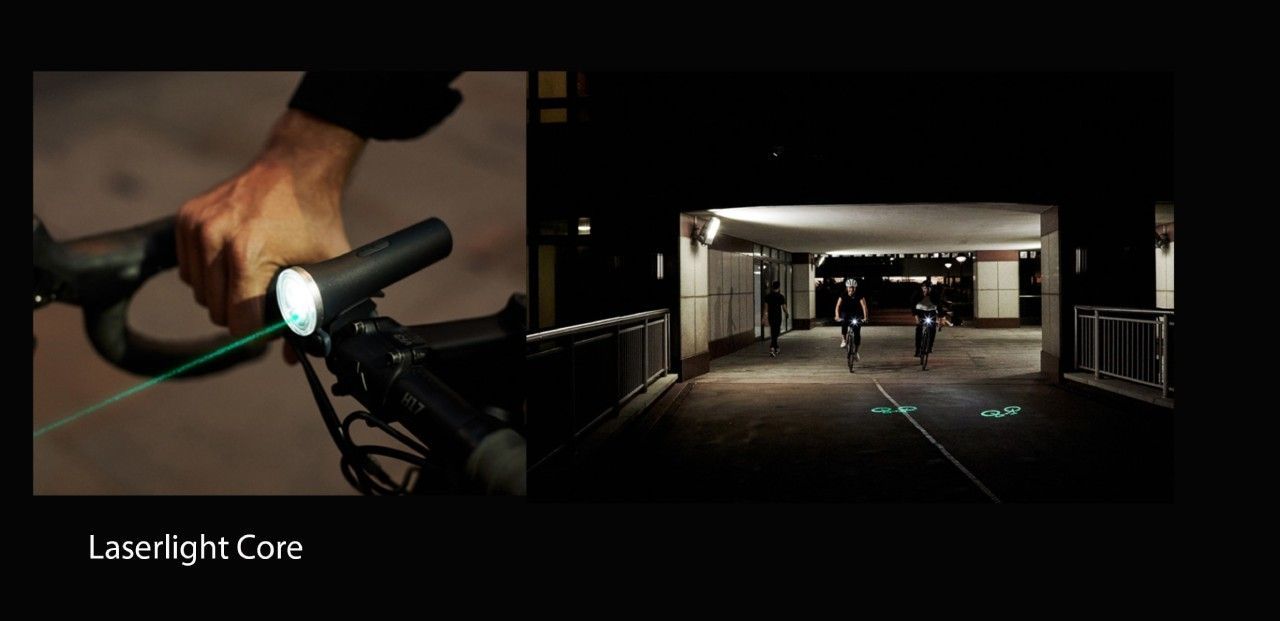
Function:
- Projected Image: The Laserlight Core projects a green bicycle icon onto the road, approximately 20 feet ahead of the cyclist. This bright and highly visible image helps drivers detect cyclists earlier, even in low-light conditions.
Development:
- Successfully Funded on Kickstarter: Laserlight Core was developed through a successful crowdfunding campaign on Kickstarter, demonstrating significant support and demand from the cycling community.
- The Laserlight Core was launched through a successful Kickstarter campaign in 2018, raising over £100,000. It has been well-received by the cycling community, and its technology is incorporated into London's Santander Cycles bike-sharing scheme, as well as New York's Citi Bikes
Benefits:
- Enhanced Visibility: Studies by the Transport Research Laboratory showed that the Laserlight Core reduces the risk of collisions by increasing visibility at blind spots by up to 32% and reducing blind spots by 97%.
- Driver Awareness: The projected bicycle image serves as a unique visual cue that helps drivers notice cyclists sooner, especially in areas with heavy traffic.
Features:
- The Laserlight Core combines a 400-lumen white light with the laser projection for maximum visibility.
- It’s USB rechargeable, with a battery life of up to 41 hours, and is designed to be fully waterproof.
The Laserlight Core remains available for purchase through Beryl's website, offering a great solution for urban cyclists focused on improving road safety through enhanced visibility.
13. Lighted Clothing
Lighted clothing, such as the NOXGEAR Tracer 2 illuminated vest, integrates LEDs to provide high visibility in low-light conditions. This innovative style of gear significantly enhances safety by ensuring cyclists are easily seen by motorists from all angles.
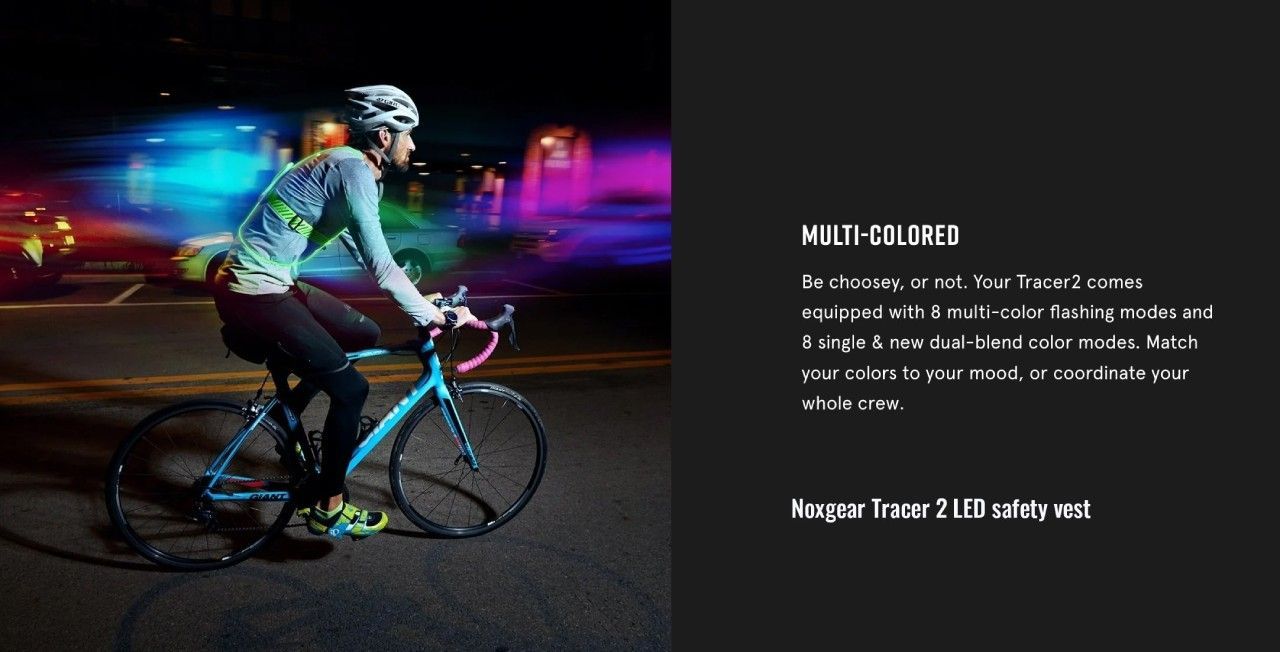
Example:
- NOXGEAR Tracer 2 Illuminated Vest: This vest features bright, multi-colored LED lights that provide 360° illumination, making cyclists highly visible from a distance.
Features:
- USB Rechargeable: The vest’s LED lights are powered by a rechargeable battery, which can easily be charged via USB, ensuring they're ready for every ride.
- Multiple Light Modes: Offering different lighting modes (solid, flashing, multi-color), cyclists can adjust their visibility depending on conditions.
- Lightweight and Comfortable: Designed to be worn over any type of clothing, the vest is lightweight and non-restrictive, making it ideal for any night time ride.
Benefits:
- Increased Visibility: The 360° illumination from the vest significantly improves visibility, reducing the risk of accidents, especially at night.
- Convenient and Comfortable: The vest is lightweight, adjustable, and designed for comfort during long rides, providing excellent visibility without bulky attachments.
- Versatility: Multiple light modes allow cyclists to adjust visibility for different environments and times of day.
Tips To Use It Efficiently:
- Regular Charging: Ensure the vest is fully charged before each ride to maintain optimal visibility.
- Layering: Combine the illuminated vest with reflective clothing for maximum visibility.
- Proper Care: Follow the manufacturer’s instructions to maintain the functionality of the vest's LEDs.
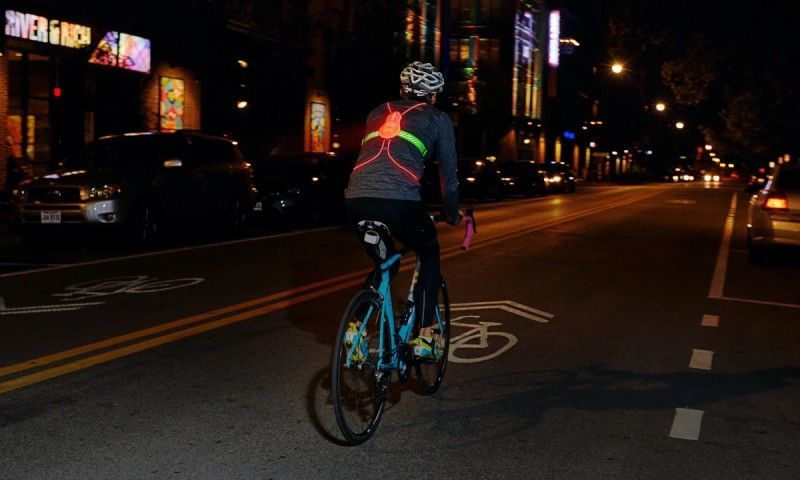
14. Airbags and Inflatable Bicycle Safety Gear
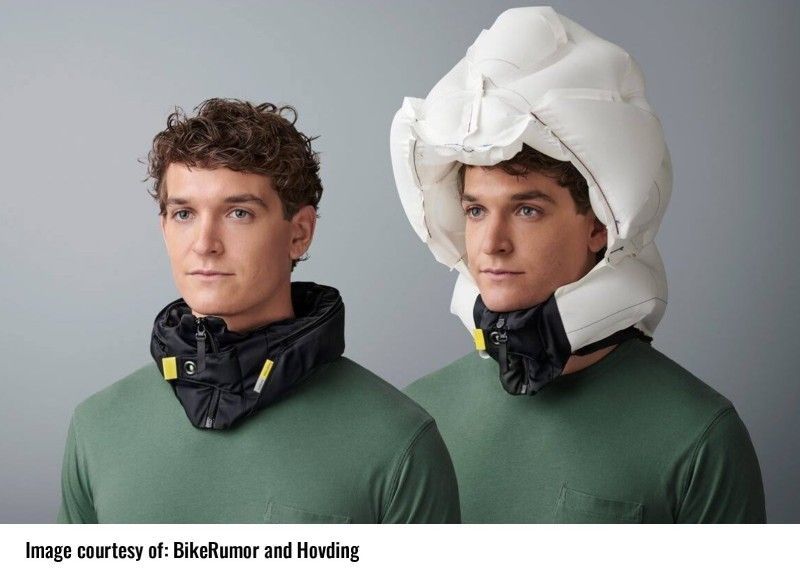
Cycling airbags are innovative safety devices designed to offer superior protection to cyclists during accidents. Two notable examples have emerged in the market: the Helite B'Safe Airbag Vest and the now-discontinued Hövding Airbag Helmet. While the Hövding helmet garnered attention for its unique airbag collar, the company faced challenges and ultimately went out of business in 2023. This highlights the fact that, although some safety innovations don’t succeed commercially, their development pushes the industry forward.
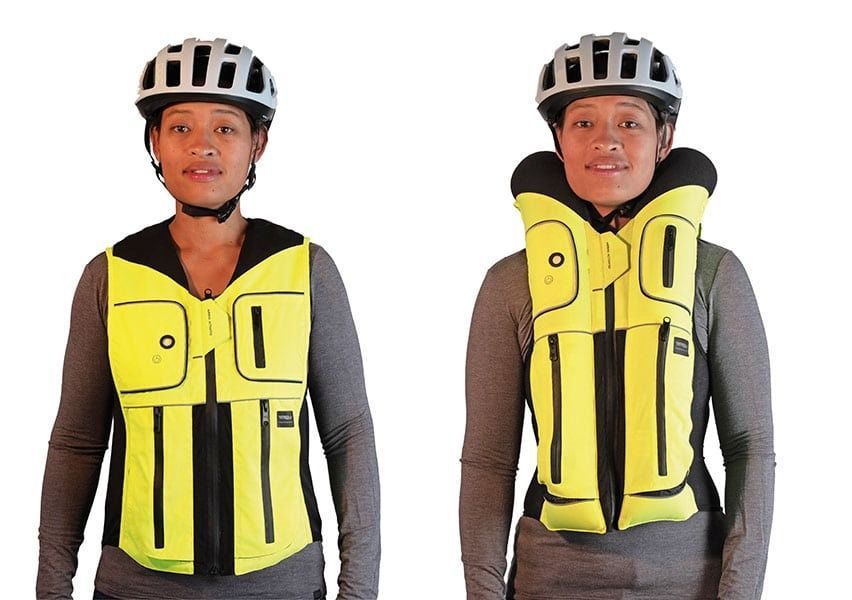
Helite B'Safe Airbag Vest:
The Helite B'Safe Airbag Vest is one of the most advanced airbag systems for cyclists currently available. This vest inflates in milliseconds when it detects an abnormal movement or impact, protecting the chest, abdomen, neck, and spine from injury. The vest uses two sensors: one mounted on the bike and the other in the vest, which communicate in real-time to detect potential crashes and inflate the airbag before impact.
- Features:
- Protects the upper body, including the chest, neck, and back.
- Reusable airbag with easy-to-replace CO2 cartridges after inflation.
- Built-in real-time motion sensors that accurately detect accidents.
- Benefits:
- Offers superior protection by covering vital areas like the torso and neck, which are not typically covered by traditional helmets.
- Fast Inflation: Inflates in just 0.1 seconds to protect cyclists from impact.
- Provides peace of mind for cyclists who prioritize safety in high-risk environments like urban areas or long commutes.
- Where to Buy:
- The Helite B'Safe Airbag Vest is available for purchase at Helite's official website.
Unique and Cutting-Edge Safety Gadgets
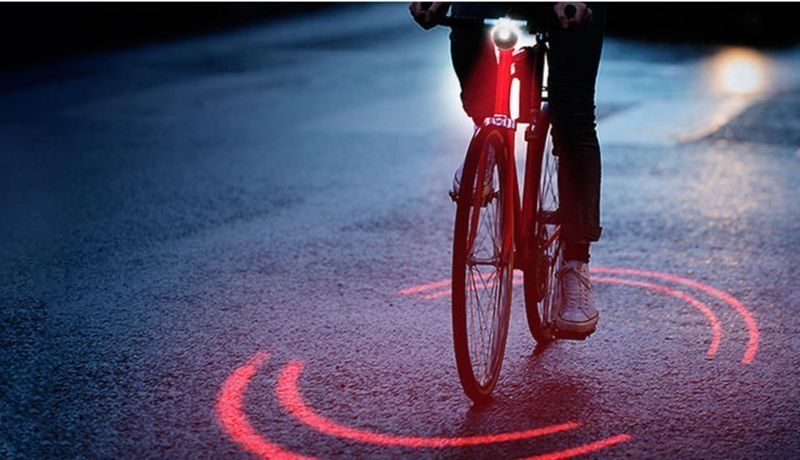
15. See.Sense ICON3 Smart Bike Lights
The See.Sense ICON3 Smart Bike Lights are cutting-edge safety tools designed to protect and enhance cyclist visibility in all conditions. Whether you’re cycling in urban environments or rural areas, these lights adapt to your surroundings to ensure you stay visible to other road users.
- Features:
- 360° Visibility: The ICON3 provides powerful 360-degree visibility with its ultra-bright 575-lumen front and 350-lumen rear lights. This ensures you’re seen from all angles, significantly improving your safety on the road.
- Smart Technology: Equipped with smart sensors, the lights can detect risky moments such as traffic roundabouts or intersections and will flash brighter and faster to attract attention. Additionally, the "Get Me Home Mode" automatically dims the lights when battery life is low, providing an extra hour of visibility.
- App Connectivity: The lights can be controlled through the See.Sense app, where you can customize light settings, check battery levels, and receive alerts for potential crashes or theft attempts.
- Benefits:
- Proactive Safety: The smart sensors actively respond to environmental factors, making you more visible at critical moments, thus reducing the risk of accidents.
- Daylight and Nighttime Visibility: ICON3 lights are bright enough for both daytime and nighttime use, offering optimal visibility during all rides.
- Versatile Design: Lightweight and easy to mount, these lights are designed to fit seamlessly into any cycling setup without compromising performance or safety.
- Where to Buy:
- You can purchase the See.Sense ICON3 Smart Bike Lights directly from their official site:
See.Sense ICON3 Smart Bike Lights
16. Advanced Bicycle Safety Technologies: Apps and Tools for Safer Rides
While dedicated bicycle safety apps are limited in 2024, modern cycling technology continues to evolve, offering tools that increase rider awareness, improve visibility, and alert emergency contacts in the event of an accident. The app you choose will depend on your riding style and needs. From crash detection systems to real-time tracking apps, here are some of the most effective tools for safer rides:
1. Busby App
The Busby app provides real-time incident detection and location sharing. In the event of a crash, the app can automatically alert your emergency contacts with your GPS location, ensuring help arrives quickly. Busby also offers group ride features, making it easier for cyclists to stay connected and monitor each other's safety.
- Best for: Incident detection and group safety
- Pro Tip: Enable real-time location sharing during solo or group rides for added peace of mind.
2. RoadID App
RoadID allows cyclists to share their live location with selected contacts and sends automatic notifications in case of an accident. It can be an invaluable tool for solo cyclists, ensuring that someone always knows your whereabouts. The app also allows users to store vital medical information, which can be shared with emergency responders.
- Best for: Live GPS tracking and emergency contact alerts
- Pro Tip: Update your medical info and contacts regularly to ensure quick and accurate response in case of an emergency.
Enhancing Cyclist Safety: The Impact of Advanced Technology on Safer Rides
In conclusion, advanced safety technology is revolutionizing cycling by providing tools that increase awareness, enhance visibility, and improve communication in emergencies. From basic essentials like helmets, a reliable bike lock, and lights to cutting-edge radar systems and real-time tracking apps, these innovations are making roads safer for cyclists everywhere.
Whether you're a casual commuter or a serious cyclist, integrating these technologies into your rides can reduce risks, offering both protection and peace of mind. Staying equipped with the right gear isn't just about improving your experience—it's about ensuring your safety on every ride.
At Bike Legal, we are cyclists representing cyclists. If you’ve been involved in a bicycle accident, our team combines deep cycling knowledge with unmatched legal expertise to secure the compensation you deserve. Beyond legal advocacy, we're committed to promoting cycling safety through education and support.
Contact Bike Legal today for a free consultation and let our dedicated team of cyclists fight for your rights.
